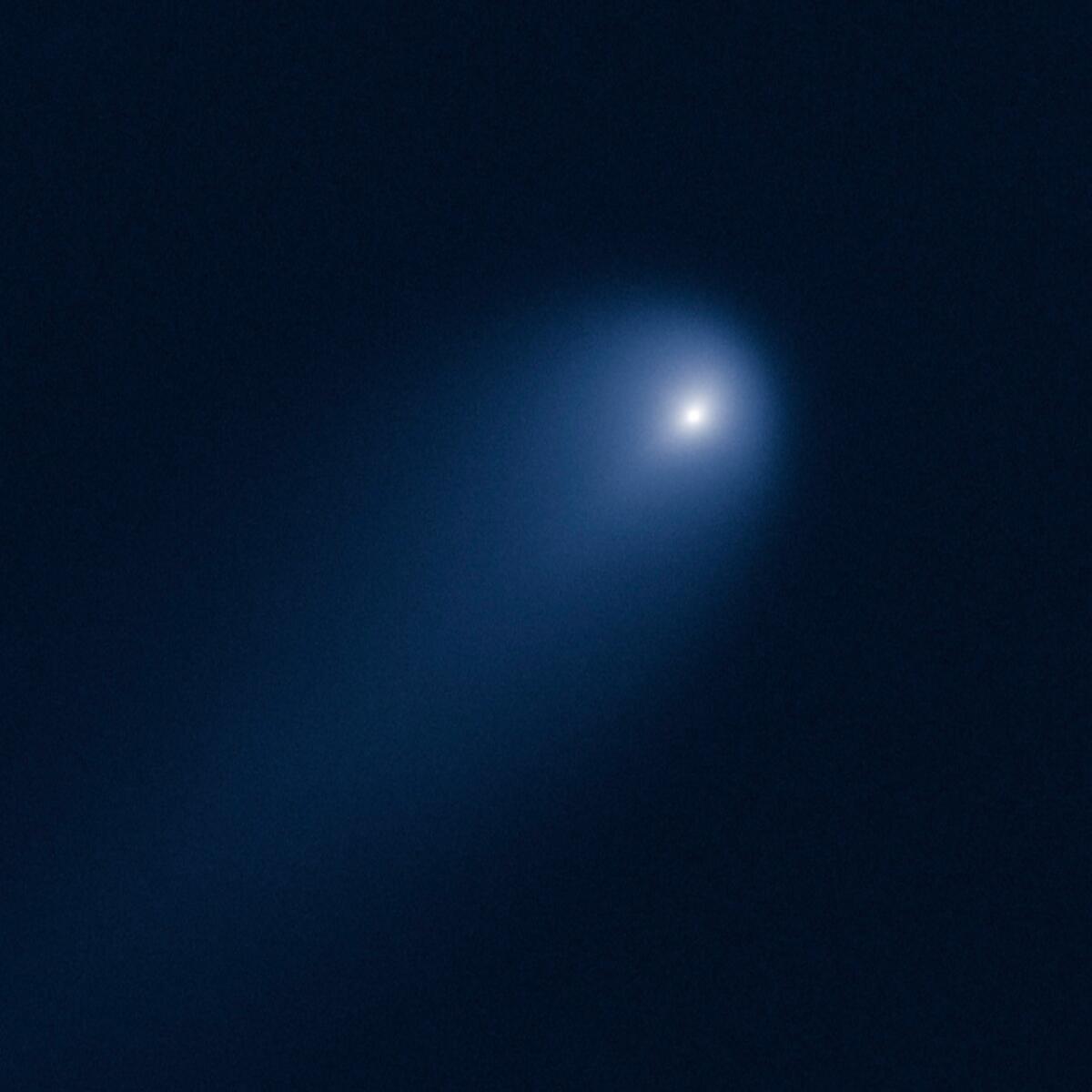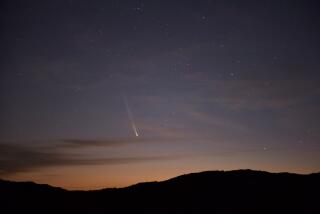Hubble has picture of ‘comet of century’; this spectacle could fizzle

- Share via
The possible “comet of the century” is hurtling through space at approximately 47,000 mph. Its dust tail extends for more than 57,000 miles. And this fall it may appear as bright in our sky as the moon.
Its name is Comet ISON, and the Hubble Space Telescope has just snapped its first picture of this celestial phenomenon.
That eerie, optical light image you see above that seems to say, “I’m coming,” was taken April 10. At that time the comet was slightly closer to Earth’s orbit than Jupiter’s orbit, but still 386 million miles from the sun.
Even at that great distance, the sun is warming the comet’s surface, causing it to release gases and dust from its icy nucleus.
As the comet zooms deeper into our solar system, the sun’s warmth will cause it to release gas and dust at an even faster rate. And since its orbit will take it on a hairpin turn just 700,000 miles from the sun, it could start releasing other materials such as silicates and metals that will create large amounts of dust, and give us one of the best night sky shows in years.
PHOTOS: Amazing images from space
Based on the Hubble image above, scientists estimate that the nucleus -- the solid body at the center of the comet -- is a relatively small 3 or 4 miles across, while its dusty coma -- the head of the comet -- is about 3,100 miles across.
So far, scientists have had difficulty predicting how Comet ISON will react to its close brush with the sun that will take place in late November.
If the comet survives, scientists say the show could be dazzling here on Earth -- with the comet easily visible in the daytime sky, glowing as bright as the moon.
Alternatively, its close approach to the sun could cause it to evaporate and then -- poof. The end. No spectacular show.
Either way, let’s enjoy the journey.







